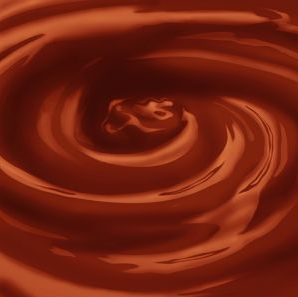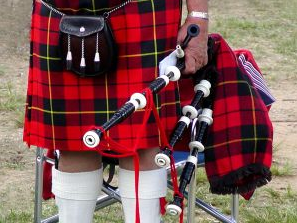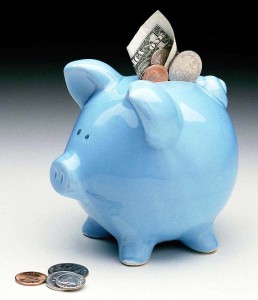 Ah, there’s nothing better on a crisp fall day than a cup of hot cocoa. We found some new ways to enjoy that cup of steaming chocolate, and we hope you like them.
Ah, there’s nothing better on a crisp fall day than a cup of hot cocoa. We found some new ways to enjoy that cup of steaming chocolate, and we hope you like them.
The easiest way to change it up is to add one new ingredient. Flavor extracts can work magic on the most humble cup of cocoa and turn it into a flavor explosion. Try mint extract (or let mint candies dissolve!) or almond extract to turn your cuppa into Almond Joy Cocoa.
HERSHEY’S “Perfectly Chocolate” Hot Cocoa
(from www.hersheys.com)
Ingredients (makes 5 cups):
- 1/2 cup sugar
- 1/4 cup HERSHEY’S Cocoa
- Dash salt
- 1/3 cup hot water
- 4 cups (1 qt.) milk
- 3/4 teaspoon vanilla extract
- Miniature marshmallows or sweetened whipped cream (optional)
Directions:
1. Stir together sugar, cocoa and salt in medium saucepan; stir in water. Cook over medium heat, stirring constantly, until mixture comes to a boil. Boil and stir 2 minutes. Add milk; stirring constantly, heat to serving temperature. Do not boil.
2. Remove from heat; add vanilla. Beat with rotary beater or whisk until foamy. Serve topped with marshmallows or whipped cream, if desired.
Variations: Add one of the following with the vanilla extract:
SPICED COCOA: 1/8 teaspoon ground cinnamon and 1/8 teaspoon ground nutmeg. Serve with cinnamon stick, if desired.
MINT COCOA: 1/2 teaspoon mint extract OR 3 tablespoons crushed hard peppermint candy OR 2 to 3 tablespoons white crème de menthe. Serve with peppermint candy stick, if desired.
CITRUS COCOA: 1/2 teaspoon orange extract OR 2 to 3 tablespoons orange liqueur.
SWISS MOCHA: 2 to 2-1/2 teaspoons powdered instant coffee.
COCOA AU LAIT: Omit marshmallows or whipped cream. Spoon 2 tablespoons softened vanilla ice cream on top of each cup of cocoa at serving time.
SLIM-TRIM COCOA: Omit sugar. Combine cocoa, salt, and water; substitute nonfat milk. Proceed as above. With vanilla, stir in sugar substitute with sweetening equivalence of 1/2 cup sugar.
CANADIAN COCOA: 1/2 teaspoon maple extract.
MICROWAVE SINGLE SERVING: Combine 1 heaping teaspoon HERSHEY’S Cocoa, 2 heaping teaspoons sugar, and dash salt in microwave-safe cup or mug. Add 2 teaspoons cold milk; stir until smooth. Fill cup with milk. Microwave at HIGH (100%) 1 to 1-1/2 minutes or until hot. Stir to blend; serve.
Nutritional information per serving:
Calories: 180, Total Fat: 4g, Saturated Fat: 2.5g, Cholesterol: 15 mg, Sodium: 100mg,
Total Carbohydrate: 32g, Dietary Fiber: 2g, Sugars: 29g, Protein: 7g, Vitamin A: 8%DV*,
Vitamin C: 0%DV*, Calcium: 25%DV*, Iron: 0%DV*
*%DV= %Daily Values are calculated based on a 2000 calorie diet
Mexican Hot Cocoa
(from http://www.epicurious.com/recipes/drink/views/Mexican-Hot-Cocoa-241138)
Ingredients (makes 8 cups):
- 2 cups reduced-fat (2 percent) evaporated milk
- 1/2 cup whole milk
- 1/2 cup chocolate liqueur
- 1 teaspoon vanilla extract
- 1/4 cup sugar
- 1 tablespoon unsweetened cocoa
- 1 1/2 teaspoons ground cinnamon
- 1/4 teaspoon ancho chili powder
- 10 cinnamon sticks
- 1 dried red chile
- 2 1/2 ounces bittersweet chocolate, broken into pieces
- 1/4 cup heavy whipping cream
Preparation:
1. Whisk evaporated milk, whole milk, liqueur, vanilla, sugar, cocoa, 1 teaspoon of cinnamon and chili powder in a heavy saucepan.
2. Add 2 of the cinnamon sticks and chile and cook gently over medium-low heat until warm. Add chocolate and cook, whisking until melted. Gently bring to a high simmer; reduce heat and simmer until liquid thickens and reduces slightly, whisking often, 10 minutes.
3. Combine heavy cream with remaining 1/2 teaspoon cinnamon and beat until peaks form.
4. Ladle 1/3 cup hot cocoa into each of 8 teacups; top with 1 tablespoon whipped cream and
garnish with a cinnamon stick.
Nutritional information per serving:
218 calories per teacup, 7.8 g fat (4.8 g saturated), 20 g carbs, 1 g fiber, 2.3 g protein














